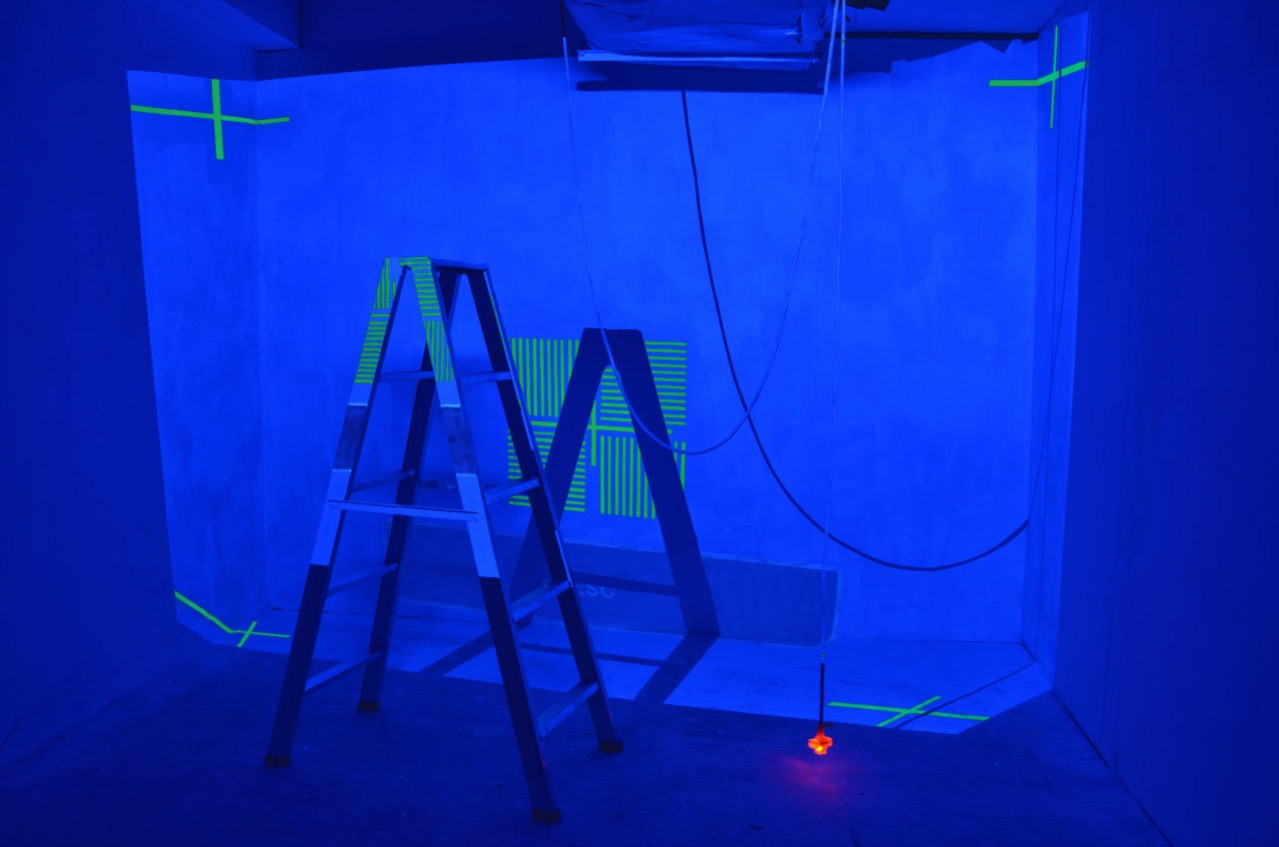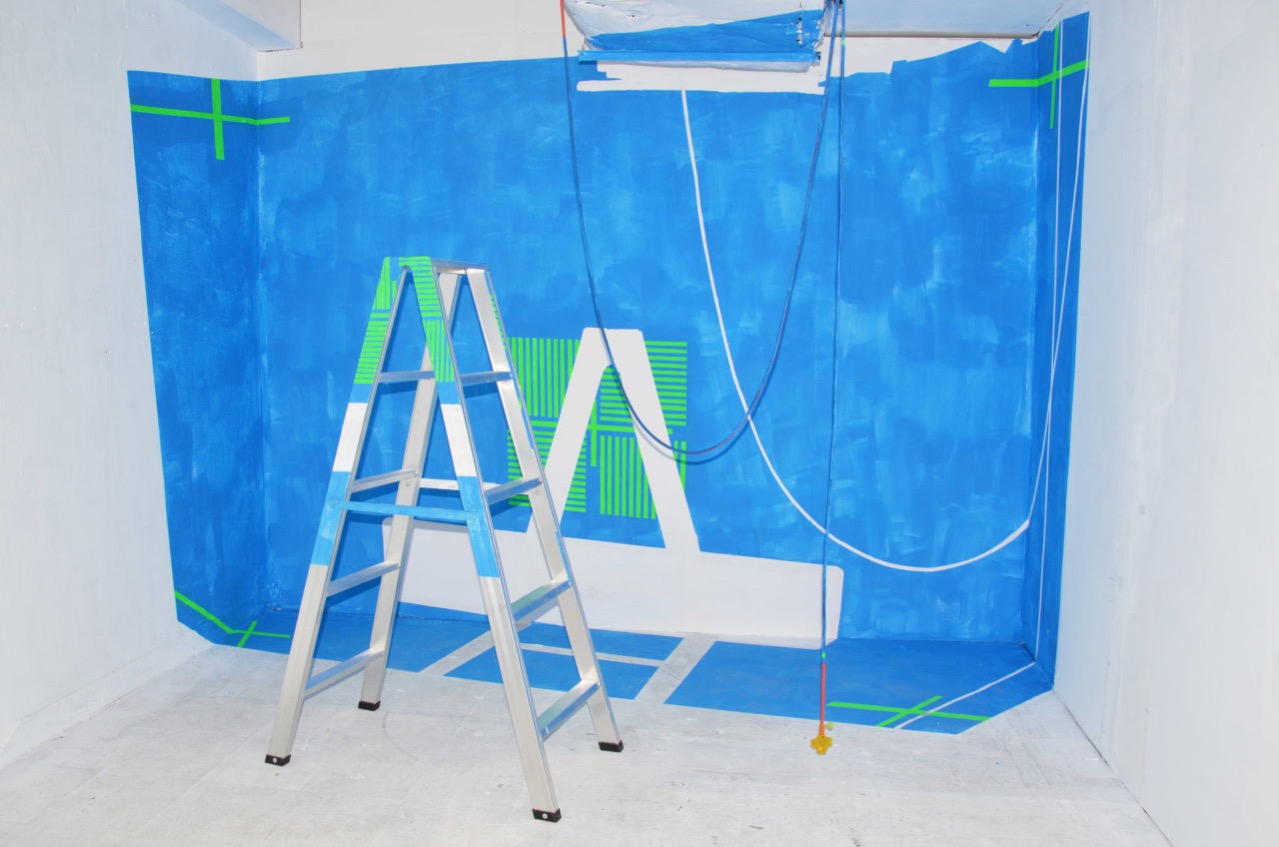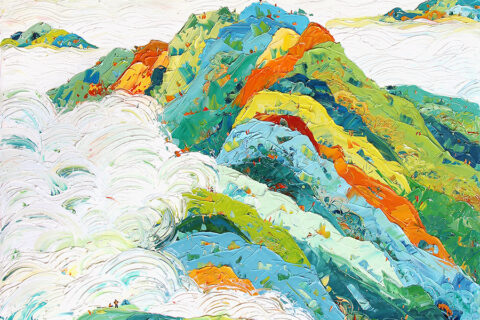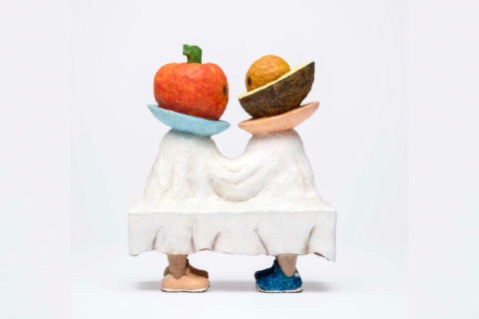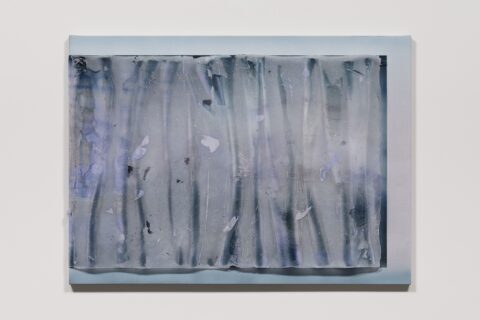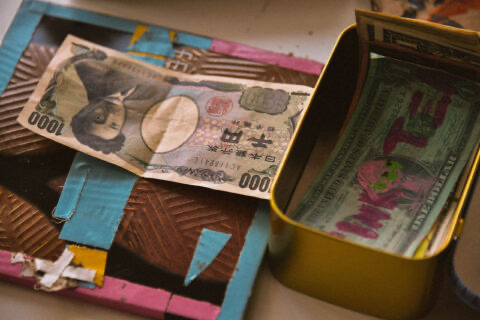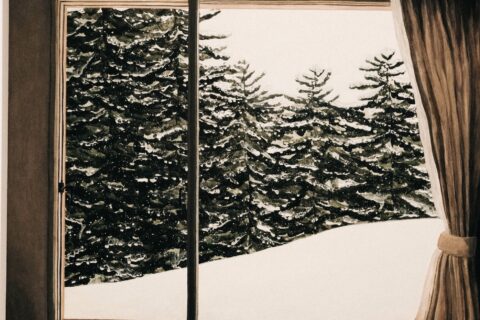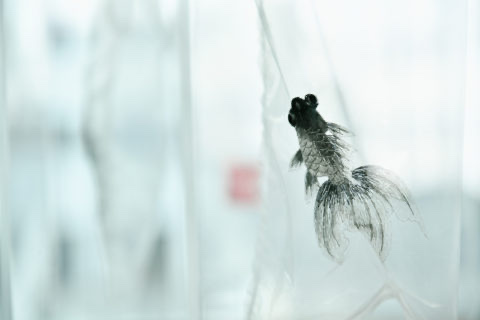
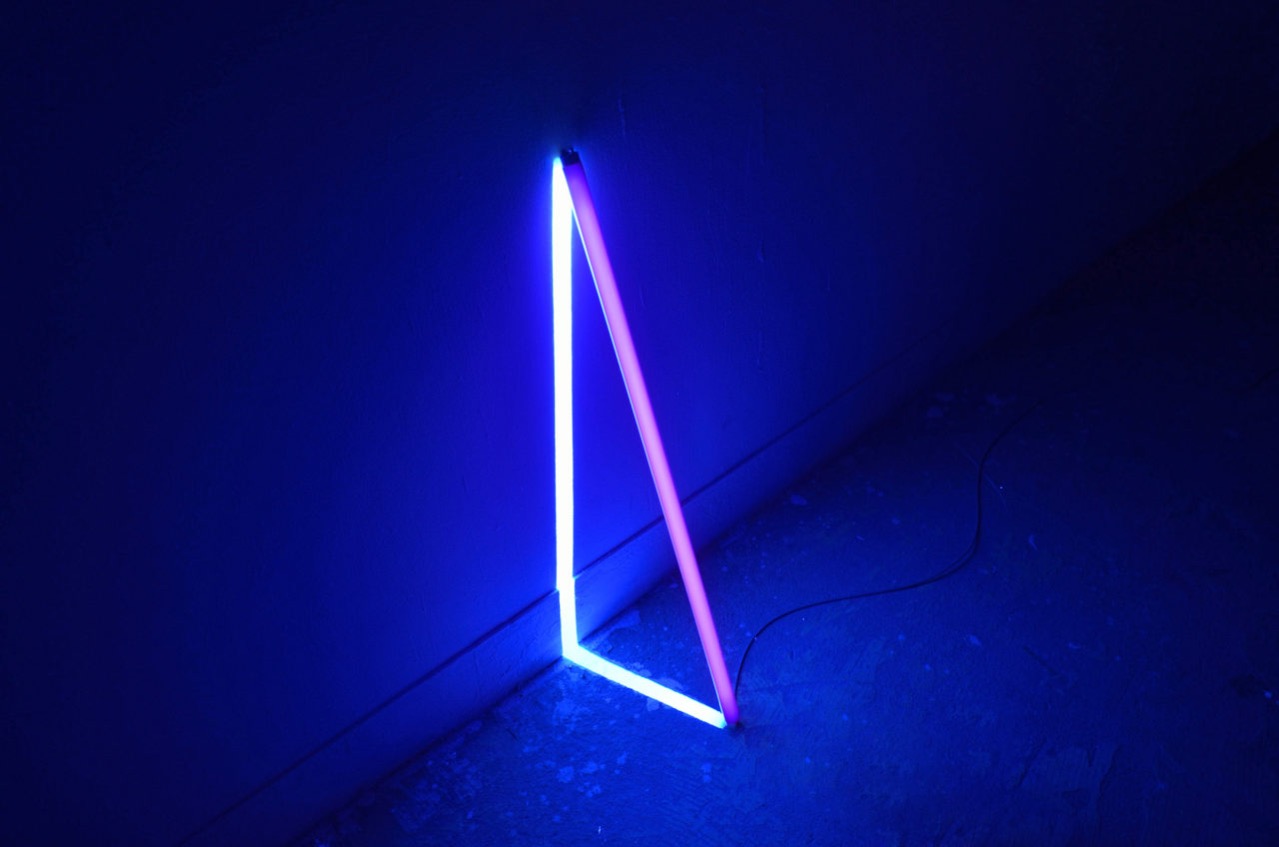
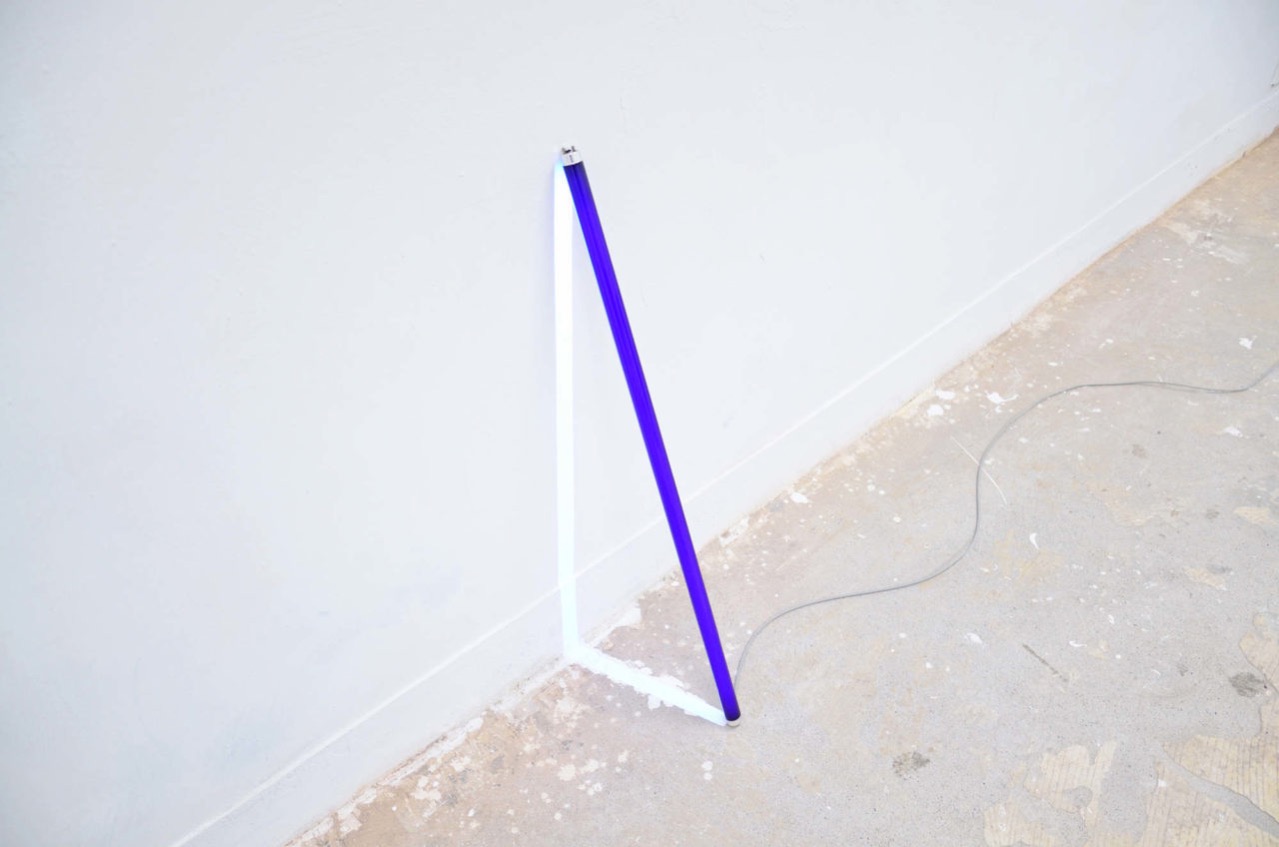
1992年出生於台灣宜蘭的謝佑承現在於國立台北藝術大學的新媒體藝術研究所,修讀媒體藝術。他的專長包括空間裝置及複合媒體,而且近期喜歡運用螢光漆料創作,探索虛/實、內/外空間,以及觀看方式的可能性,在不同的發光體與影像間徘徊。他的作品曾獲得2014桃源創作獎、2016「全國美術展」新媒體藝術類銀獎,然後在2016-17年間兩次入選歐洲藝術學院聯盟NEUNOW藝術季,今年更獲得了2018「台南新藝獎」。
1. 你最喜歡自己的那一件作品呢?為什麼?
《亮處Shadow Side》,這個概念由螢光燈管和它的影子所構成,最接近我在使用螢光漆中思考主客關係的一個原型。如果說萬物能從他們的影子裡,理解到自己存在於這裡,這個想法在燈管身上似乎不太可行,因為當燈管做為照明時,即便能照出每個除了它以外的實體,卻無法同時照亮自己,顯示出它的影子。我的想像是:有沒有可能以它自身之力,確認它自己呢?大概是這樣的想法。
2. 你創作的靈感從何而來?
我的想法大部分來自生活上一閃即逝的瞬間、某一刻突然鬆懈的發現,或是從一些等待上尋找隱微的感受。
3. 你為什麼偏愛螢光漆料呢?
會一直使用螢光漆,應該是覺得自己的某部分能夠有所回應。雖然螢光漆向來跟娛樂性、公共性的用途有些關係,比方廣告招牌、霓虹燈等,人們征服了光的技術,用以讓商品受注目、廣告被關注,也因此螢光大多數的印象大略不離這些外放、侵略性的視覺意圖。
對我而言,螢光是一種能夠在黑暗中發光的物質,它提供一種自體發光的內部關係,可以欺瞞、模擬現實中影像機器所投射出那個認知模型,如果真實是洞穴內圍繞火光的投像與縮影,螢光的物質性也許能反轉這種主動與被動的關係。
4. 你希望能透過作品表達什麼?
傳達少數時刻感覺到的一種經驗,雖然這些作品多來自於一些私人的動機與原因,但如果能為看的人製造一些鬆懈的時刻,提供人感覺,是最理想的方式。
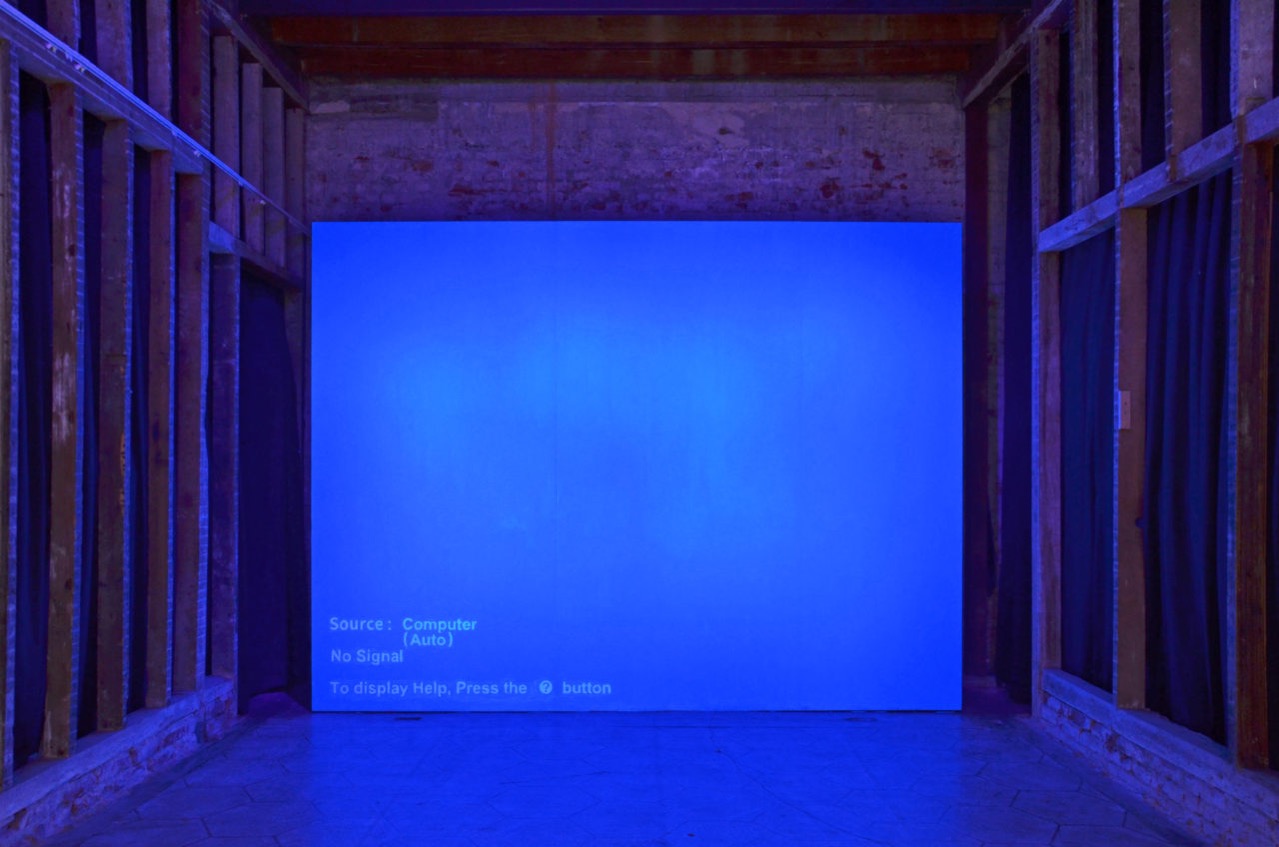
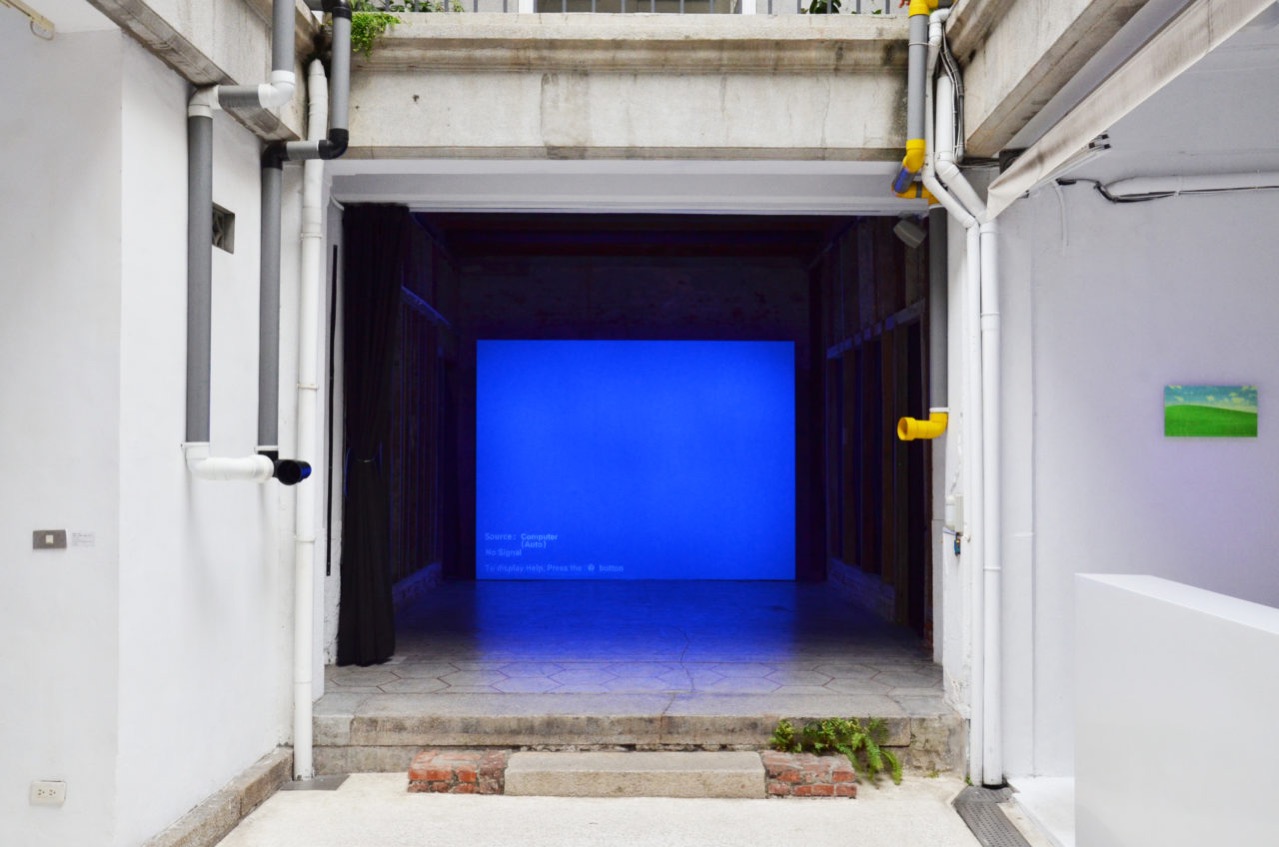
5. 「光」於你來說是什麼?
光是影像的基礎,也是時間與空間的尺度,在觀察它的緩慢時,我總是被深深吸引,它是一種透明的感知,看不見卻存在的介質。
6. 你認為自己會一直創作下去嗎?
以現階段而言做創作可能需要一些運氣。創作對內是一種梳理,對外可能是種工作,我希望能夠找到折損的平衡,互相支持發展。
7. 真相/善意的謊言。請選一個以及解釋原因。
善意的謊言。真相是已經發生的事實,善意的謊言已經做了選擇,同時包含真相。
8. 眼睛/耳朵/鼻子/嘴巴。請選一個以及解釋原因。
嘴巴。其餘三個比較不會因此受傷。
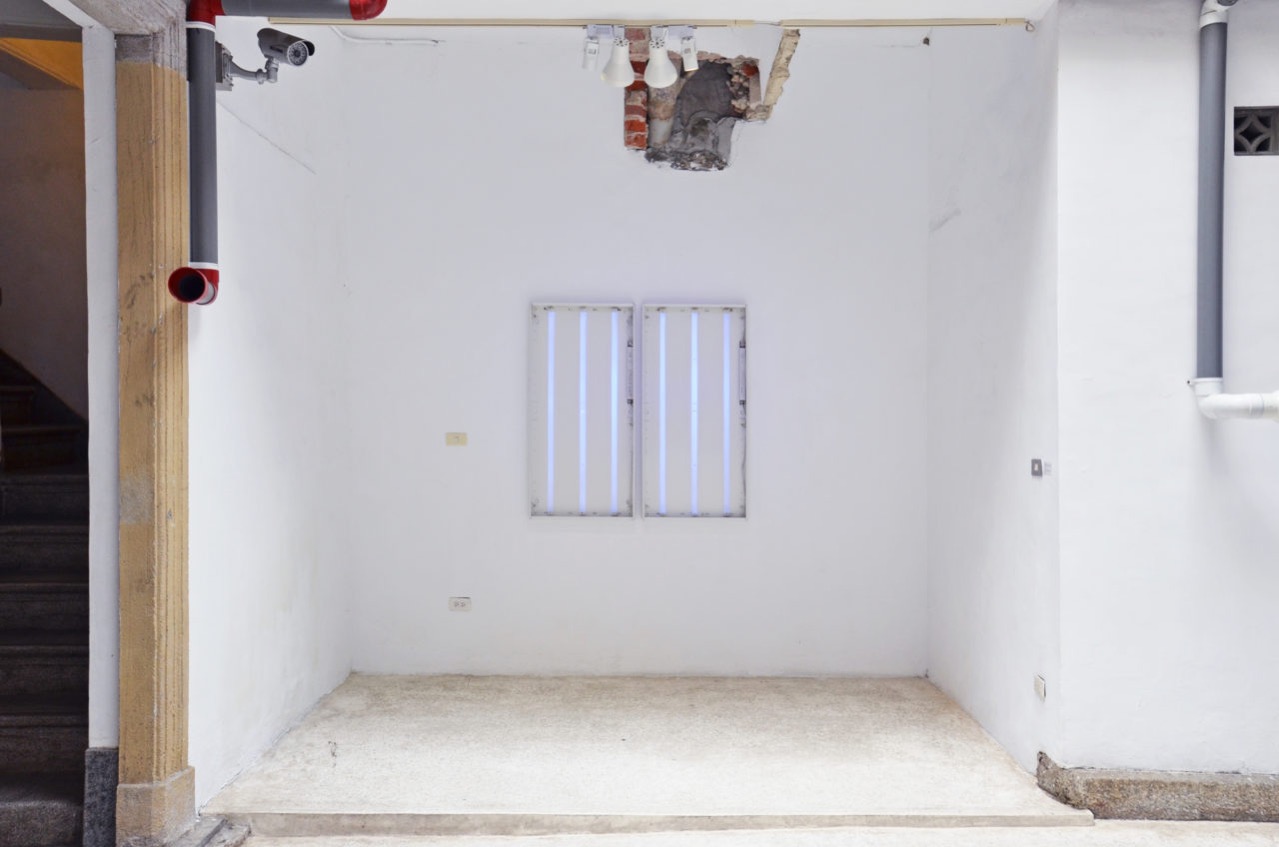
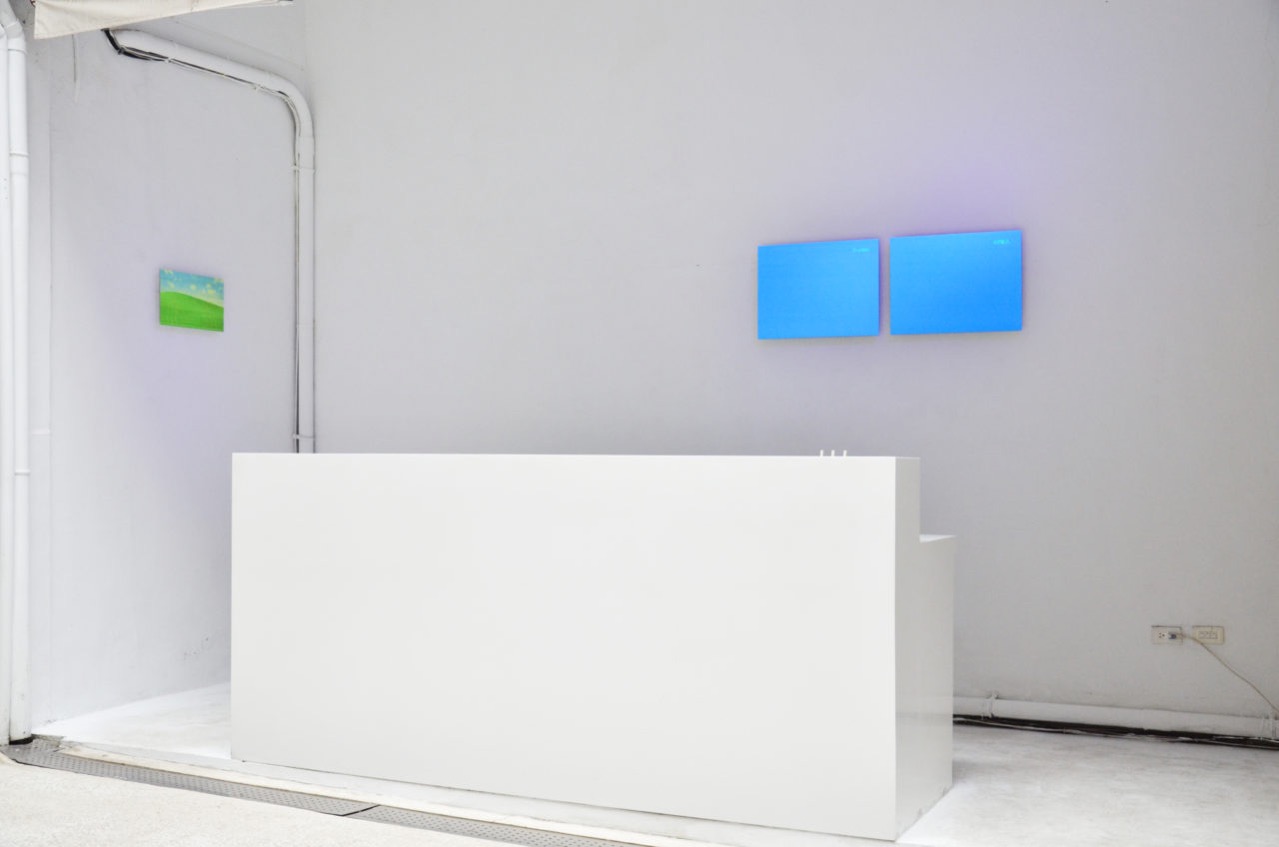
Born in 1992 in Ilan, Taiwan, Yu-Cheng Hsieh is currently studying in the graduate school of the Faculty of New Media of the Taipei National University of the Arts, majoring in media arts. His artworks specialize in mixed media and spatial installations, with a recent focus of using fluorescent paint as a medium to delve into the virtual/substance, internal/external space, the possibilities of the way of seeing, as well as the relationship between illuminator and image. Yu-Cheng Hsieh was awarded Taoyuan Contemporary Art Award 2014, Silver Medal at National Art Exhibition 2016 for New Media Art Category, and was selected by the European League of Institutes (ELIA) NEU NOW festival for their programme in 2016 and 2017. This year, Hsieh was awarded Next Art Tainan 2018.
1. Can you tell us something about the favorite piece of your own work?
My favorite work is Shadow Side, which was conceptually created by fluorescent light tubes and their own shadows. The concept is most similar to the prototype on which I used fluorescent paint to investigate the relationship between subject and object. If everything could have its own shadow to manifest its existence, then an illuminating light tube would seem to be an exception, as it could only cast shadows of any other object but never its own. I imagine if there would be any other way for a light tube to manifest its own existence? That is basically the question I tried to raise.
2. Where do you get your inspirations?
Most of my inspirations arise from transient moments in my everyday life, or those inspirations would just come to me unexpectedly; I would as well look for some subtle sensation while waiting for inspiration.
3. Why do you find fluorescent paint so fascinating?
I guess I like how fluorescent paint somehow responds to a certain part of myself, despite the fact that the material is generally used for entertainment or public purposes, such as on billboard or fluorescent light. The paint just came out as a new technique that can so effectively catch people‘s attention on the advertisers’ products. Therefore fluorescence is mostly associated with such visual intention that is aggressive and intrusive.
To me, fluorescence is a material that can emit light in darkness; it is a form of luminescence that can deceive and protest the cognitive model that things only appear due to light. If reality is merely the projected image of everything by the fire in a cave, then the essence of fluorescence has revolted against the relationship of active and passive.
4. What do you want to express through your works?
To express an experience that is rarely encountered. Although these works mostly originate from personal reasons, it would be an ideal expression if it could provide to the viewers serenity to actually experience the moment.
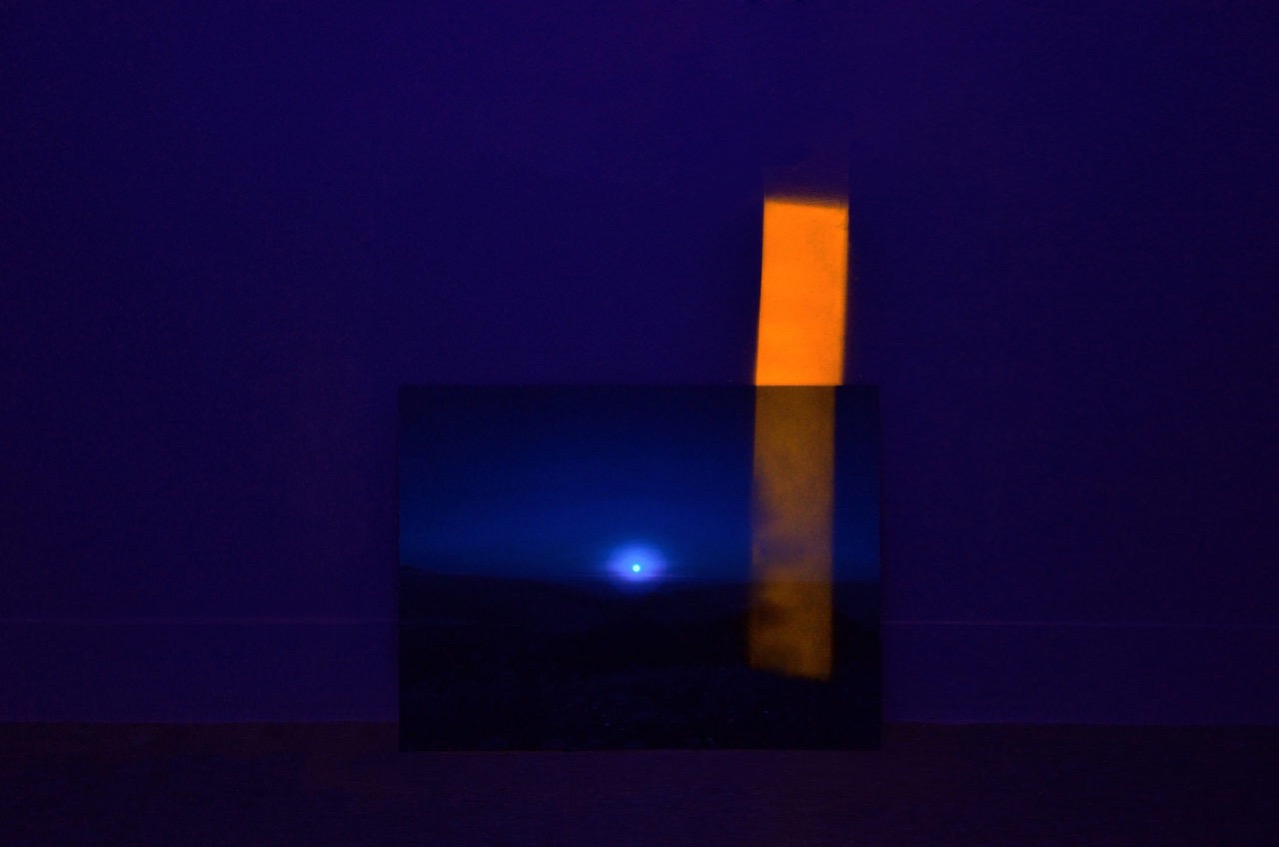
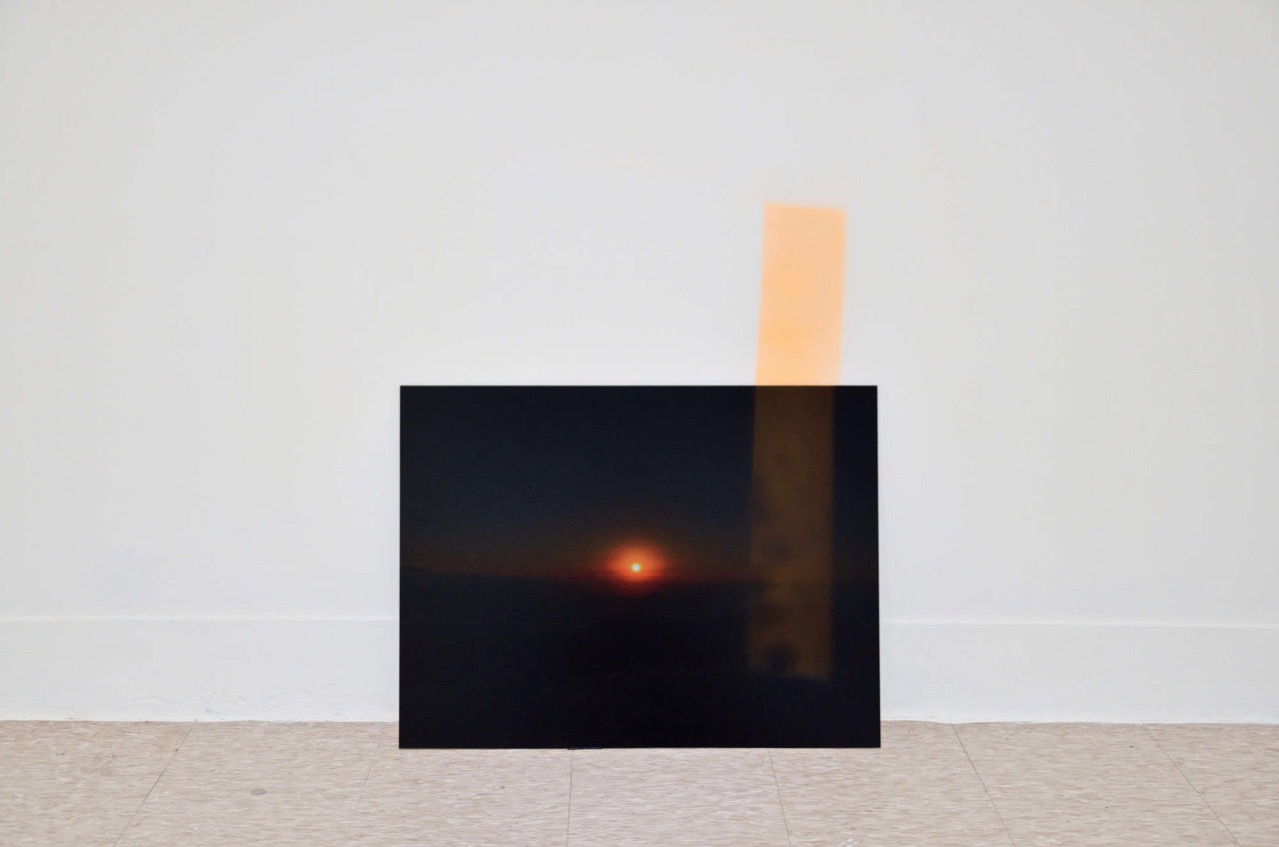
5. What does “light” mean to you?
Light is the basis for images, it is as well a scale for time and space. I always feel enchanted when observing its slowness. It is a transparent perception, an invisible but substantial medium.
6. Do you think you will continue on your path as an artist?
At this moment, I think one needs some luck to be an artist. Creativity, on one hand, is to organize one’s thought, and on the other hand a profession. I wish to maintain a balance between the two so they could become mutually beneficial to each other.
7. The truth or a white lie, which would you choose and why?
A white lie. The truth lies in the past, a white lie is a choice in which the truth also exists.
8. Eyes, ears, nose or mouth, which one would you choose and why?
Mouth. The other three options are less likely to be injured by this.
